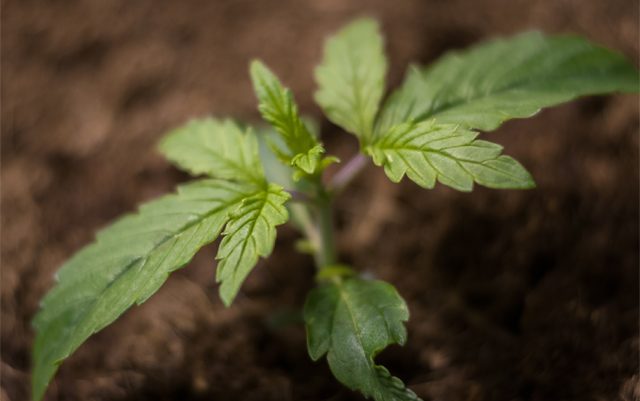One of the worst things about buying marijuana on the black market is the almost complete absence of information about who grew it and how they did it. True, some people may grow it themselves or know the grower of their cannabis personally in the illegal market, but the vast majority of buyers do not.
This is one of the many areas where legalization is said to be superior to prohibition; legal marijuana can be regulated, tested and labeled with all the pertinent information. Legalization is also likely to bring new and more efficient ways of growing and testing, something we are already beginning to see.
But there will be growing pains in this process. The effects of 80+ years of cannabis prohibition will not be undone overnight. One of the areas we see this happening is growing. For decades, growers did pretty much what they wanted, facing limited competition thanks to the illegality of what they were doing. Using some pesticides to kill pests that could cost them a lot of money at harvest time was seen by many as a no-brainer. If you are already running the risk of jail time, why risk your profits when you can just use poison to kill whatever problems may arise?
A New World
In places like California, competition is on the rise thanks to legalization. More supply makes customers more discerning in their purchases, and the competition allows them to be more discriminative in their choices. To fight for their place in the legal market, growers and sellers alike have to step up their game.
But many growers are still stuck in the past, using the same techniques they did when cannabis was illegal and competing growers were more scarce. Recent investigations and sample testing of legal cannabis in Los Angeles has shown most of the product contains high levels of pesticides, levels that would not be allowed in states that have adopted pesticide standards for legal cannabis.
“It’s really like injecting that pesticide right into your bloodstream,” said former USC chemistry professor Dr. Jeff Raber.
“It could cause damage to your kidneys, to your liver, or other organs,” he said.
According to Dr. Don Land, a UC Davis chemistry professor who is the chief scientist for Steep Hill Labs, most (70-85%) samples they test contain pesticides and “somewhere close to a third to a half [of the samples] would fail, say, by Oregon standards.”
And while most cannabis consumers and growers know that pesticides have been used for decades in illegal grows, the testing being done on samples today is relatively new.
“Up until about a year ago there wasn’t really much in the way of pesticide testing to be had and it was only really rough screening looking for really large amounts,” Dr. Land told The Marijuana Times. “It’s a relatively new offering in the testing market.”
So while there aren’t really numbers from the past to compare to, there is no doubt that pesticide use in the legal cannabis growers market is still quite widespread, and it’s a problem that needs to be addressed. After all, many people rely on marijuana for medical reasons; they use it because it is natural and effective, unlike many of the drugs their doctors have prescribed them. Oftentimes pesticide use not only makes marijuana less natural and organic, it also makes it much less effective while introducing problems on its own.
A New Path
However it is accomplished, there needs to be less pesticide use when it comes to marijuana crops. But the problem of insect infestations, fungus and mold still exist for those who grow marijuana legally, so what can be done?
“This is what I said when we first started our company, we told everybody that this kind of thing was going to happen. It has to get cleaned up and the only way to clean it up is by bringing experienced licensed Pest Control operators into the picture,” explains Matthew Mills, Chief Operating Officer of Med-X, Inc., a licensed agriculture Integrated Pest Management (IPM) operator in California. Mr. Mills and his team also manufactures an approved, all-natural cannabis insecticide called Nature-Cide. “We made it very clear that this is exactly why there has to be regulations and oversight. Medical dispensaries are pushing out product that is highly poisonous, and this isn’t just a little bit of pesticide, we’re talking about multiple pesticides. This is very dangerous to consumers.”
The Nature-Cide staff members have a great deal of experience working with cultivators growing pesticide-free cannabis, using the Nature-Cide Integrated Pest Management method as well as its approved products. He went on to tell us that not only are insects and other pests a problem that must be dealt with inside a marijuana grow itself, it’s also a problem that must be tackled by looking at your entire grow facility, protocols and staff.
“Having a solid IPM strategy is critical to avoid infestations from starting in the first place. Spider mites and root aphids are not just appearing into your facilities. People bring them in,” Mills said. “And because a lot of these guys are consulting, going from grow to grow they’re bringing it in themselves. So, with Nature-Cide being non-toxic, you can spray off all your tools, spray your Co2 bottles, spray your shoes, spray your hands, spray it on your clothes for that matter. It’s not going to harm you.”
Growers must be vigilant in all aspects of their cultivation, and if they want to avoid the infestations that befall so many, this means keeping their grow as sterile as possible – both inside and out.
More Regulations Coming
With the passage of Proposition 64 last November in California, more regulations are coming to the legal cannabis industry, and this will naturally include testing standards and allowable pesticide levels. Matthew told us that the Nature-Cide team is “currently consulting with LA County Fire Department on all of the issues that are popping up and going to pop up in the near future, now that it’s legal for individuals to cultivate in their homes. With all that we are hearing about here in Los Angeles County, there is great concern on risk factors, when DIY cultivators start bringing equipment and materials into a residential setting. Being overcome by pesticides or Co2 gas could be accidents that fire departments and hazmat teams have never really seen before, not to mention structural fires that stem from poorly installed electrical that could start popping up in residential communities. It’s gotten to a place where it could cause major public safety concerns, and the appointed authorities are gearing up for it.”
The Nature-Cide team has recognized the seriousness of the position with LA County Fire Department personnel and is going to continue to bring as much education as possible to help keep the public safe. Mills told us, “The county is going to guide LA City Fire Department on hazmat and work directly with agriculture, OCIA and all of the entities that are now going to be involved in licensing, and here we are right in the middle of it. We have worked for many years becoming licensed technicians in agriculture while practicing Integrated Pest Management protocols here in Los Angeles, and plan to continue consulting, servicing and supplying multiple commercial cultivators for many years to come.”
The Future
The notion that legalization will bring more standards and transparency and faster technological advancement is certainly one that will be born out in the future. We are already seeing some of that. But as previously mentioned, these changes won’t be overnight. Old habits are hard to break; this is as much the case for marijuana growers as it is for those in any other profession.
More testing and better standards will lead to marijuana that is safer to use, for medical and recreational customers. Advancements in technology will speed the process and give growers other tools to battle the age-old problem of pests attacking crops of all kinds.
It’s also important to note that without legalization, none of these problems would be addressed at all. There would be no testing and labeling, growers still wouldn’t care as much about the quality of their product because competition would still be limited. But now that the marijuana industry is being brought into the light of legality, the problems can be identified and remedied. That’s just one of the many reasons the future looks so bright for the cannabis market.






